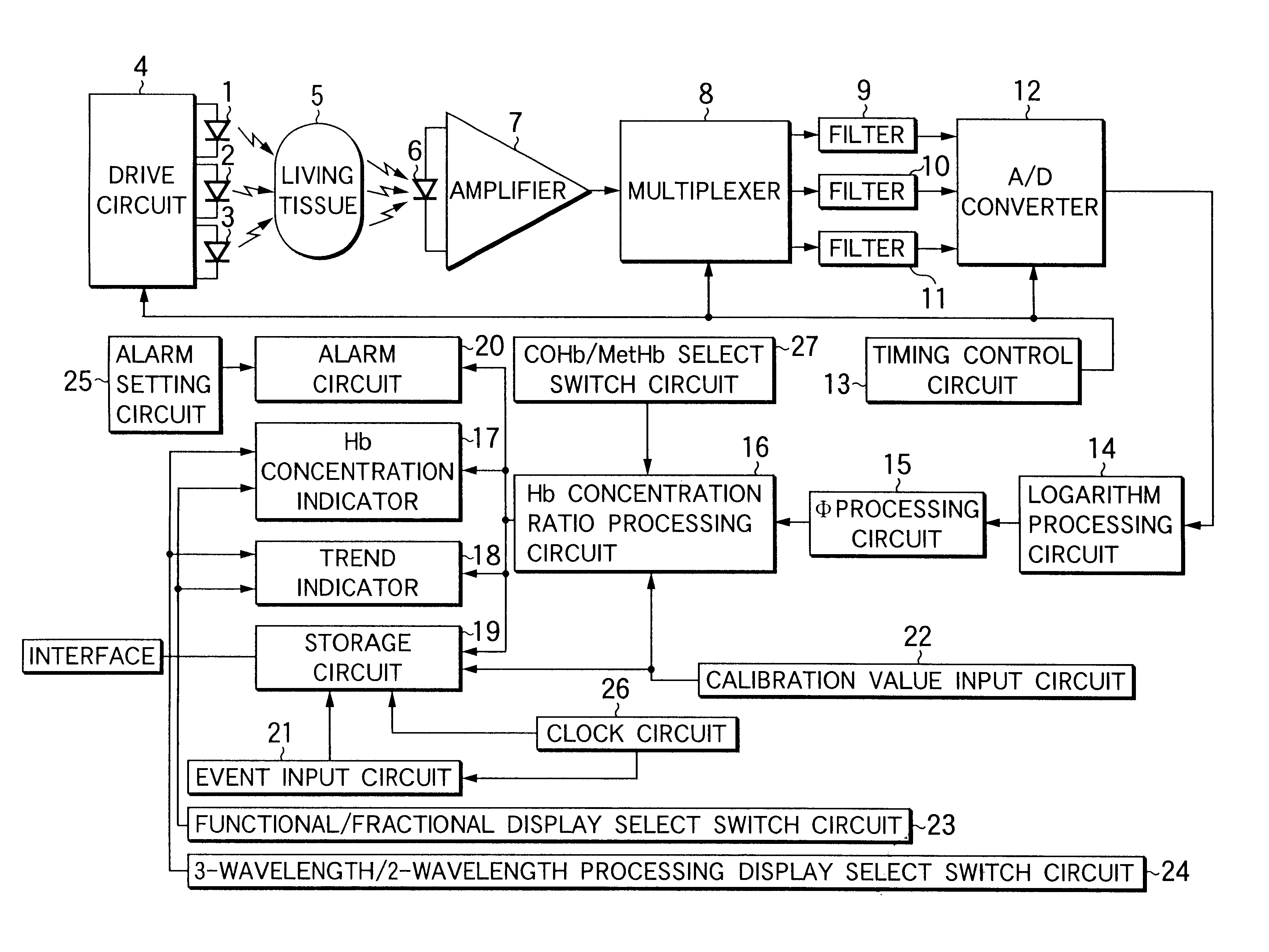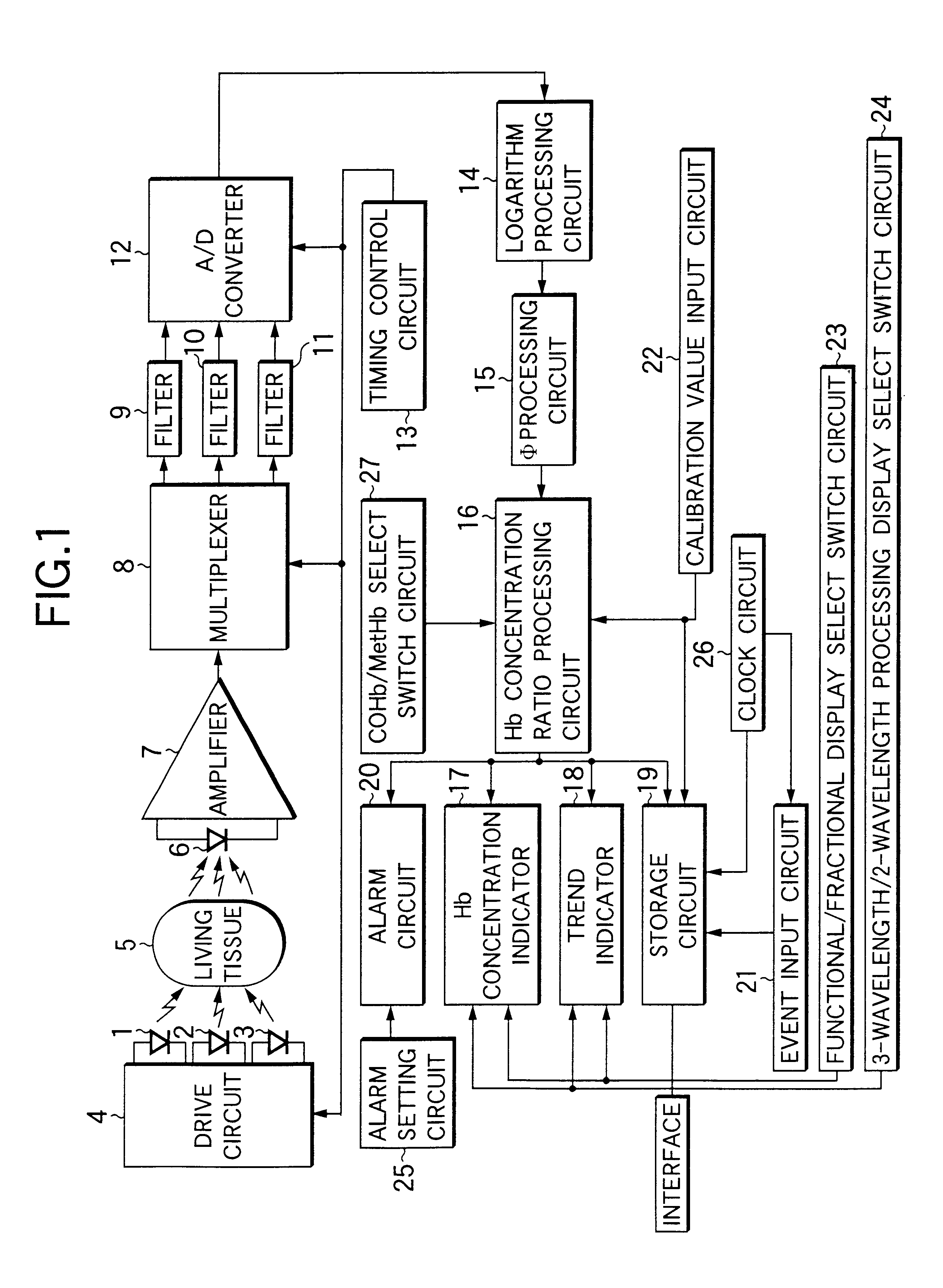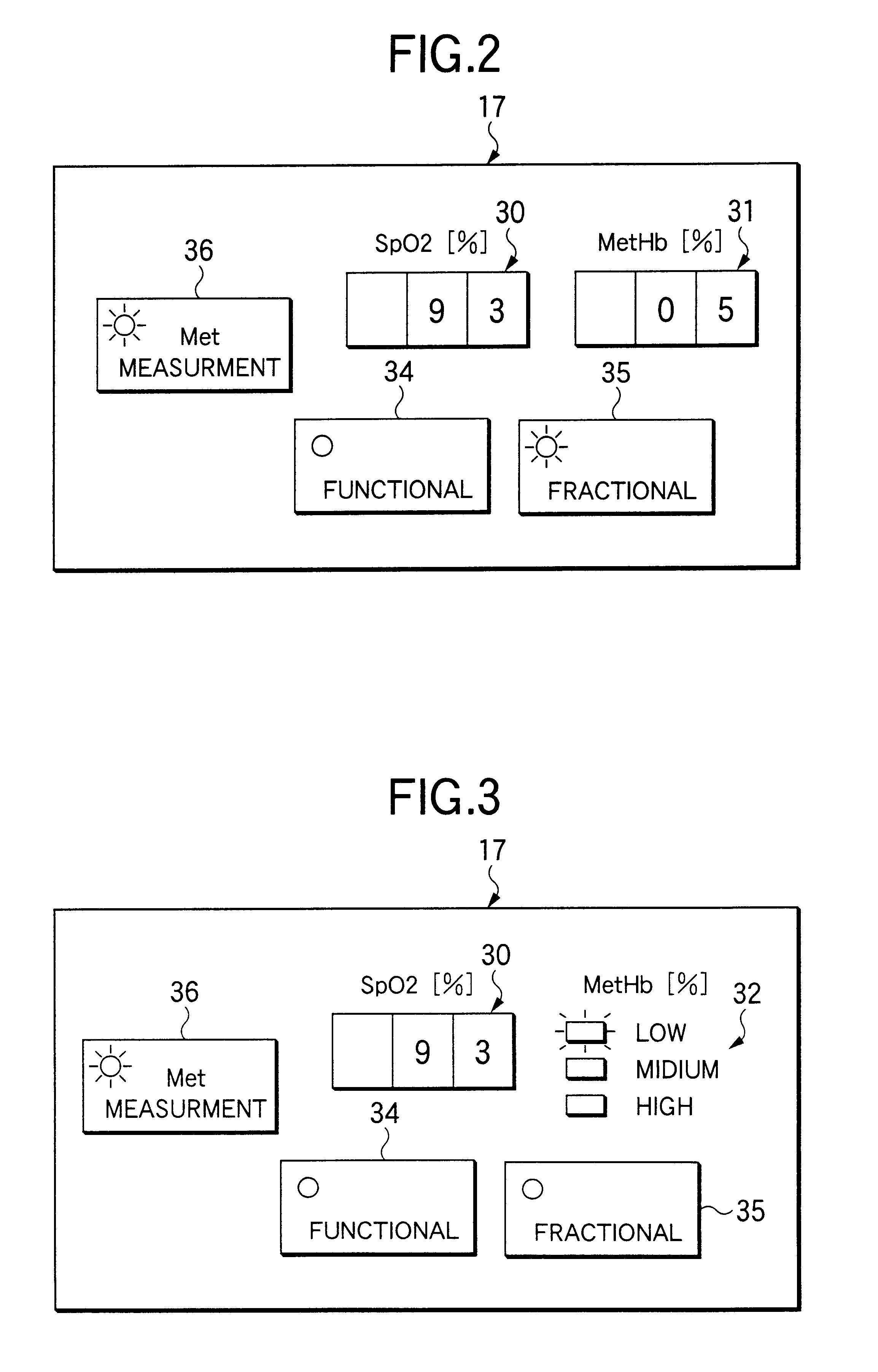Apparatus for determining concentrations of hemoglobins
a technology for hemoglobin concentration and hemoglobin saturation, which is applied in the field of measuring oxygen saturation and concentration of hemoglobin, can solve the problems of further increase in the number of wavelengths used, measurement errors produced by pure tissues other than blood, and further increase in the cost of manufacturing the apparatus, so as to achieve the effect of easy discrimination
- Summary
- Abstract
- Description
- Claims
- Application Information
AI Technical Summary
Benefits of technology
Problems solved by technology
Method used
Image
Examples
embodiments
FIG. 1 is a block diagram showing a system arrangement of an apparatus for determining concentrations of hemoglobins constructed to the present invention. In FIG. 1, reference numerals 1, 2 and 3 indicate light emitting elements as light sources. Those elements 1, 2 and 3, respectively, emit near-infrared light of a first wavelength .lambda.1, which is any of 790 nm to 1000 nm, red light of a second wavelength .lambda.2, which is any of 640 nm to 675 nm, and orange or red orange light of a third wavelength .lambda.3, which is any of 590 nm to 660 nm. Those light emitting elements are driven by a drive circuit 4. The lights emitted from those elements 1, 2 and 3 transmit through a living tissue 5, and is received by a light receiving element 6 as light receiving means. The light receiving element 6 converts the lights into corresponding electrical signals. Those electrical signals are amplified by an amplifier 7, and applied to a multiplexer 8. The multiplexer then delivers respectiv...
PUM
 Login to View More
Login to View More Abstract
Description
Claims
Application Information
 Login to View More
Login to View More - R&D
- Intellectual Property
- Life Sciences
- Materials
- Tech Scout
- Unparalleled Data Quality
- Higher Quality Content
- 60% Fewer Hallucinations
Browse by: Latest US Patents, China's latest patents, Technical Efficacy Thesaurus, Application Domain, Technology Topic, Popular Technical Reports.
© 2025 PatSnap. All rights reserved.Legal|Privacy policy|Modern Slavery Act Transparency Statement|Sitemap|About US| Contact US: help@patsnap.com



